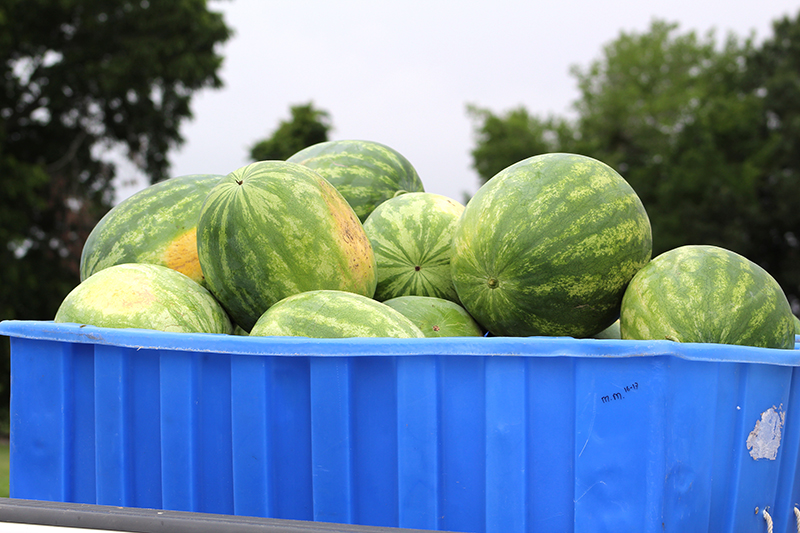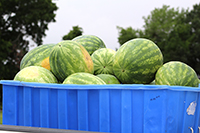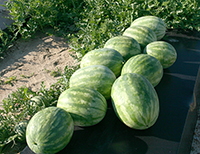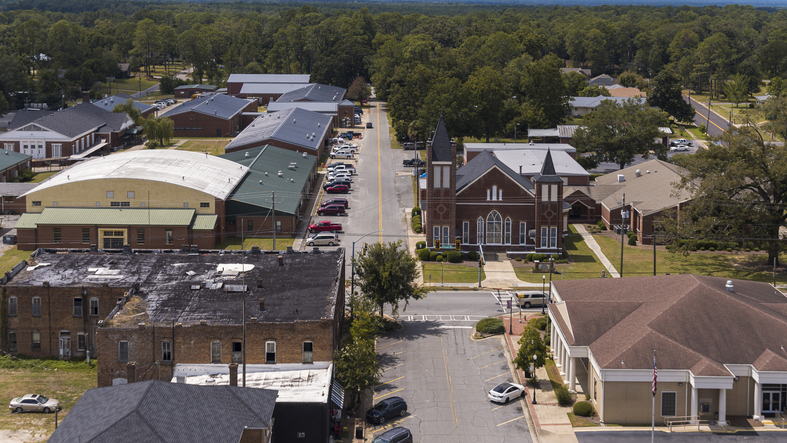Georgia farmers had fewer opportunities to effectively harvest watermelons in June thanks to an increase in rain, but disease pressure is what truly led to lower yields in the crop this year, according to University of Georgia Cooperative Extension vegetable horticulturist Tim Coolong.
“I think some growers, particularly those who had melons early, had a fairly good market and may have done well. Others may have just covered their expenses,” Coolong said.
The majority of this year’s watermelon crop has already been harvested, although Coolong estimates between 200 and 300 acres were planted for the market that runs from August to Labor Day.
According to the UGA Weather Network, Moultrie, Georgia, experienced 22 rainy days in June and received 7.21 inches of rain. Tifton, Georgia, also experienced 22 rainy days and received 5.11 inches in the same month. Some melon-producing areas near the Cordele, Georgia, region experienced up to 10 inches of rain due to isolated storms.
The wet weather led to a shorter harvest window for some fields.
“I think it didn’t affect the first harvest or the second harvest so much, but when some harvest crews went in for a third or fourth harvest, that is when I think a lot of the rain caused issues,” Coolong said. “Given the disease pressure caused by the rain, growers decided to leave more melons in the field than they typically would have in order to avoid running into problems.”
Farmers reported damage from phytophthora, a pathogen that attacks the fruit of watermelon plants and makes them unmarketable, he said. Other producers experienced issues due to gummy stem blight, a fungal disease that causes lesions on leaves, which can reduce canopy cover and, eventually, yields.
“All of these pathogens are made worse by the rain,” Coolong said.
Watermelon is a huge industry in Georgia. The crop’s 2015 farm gate value was more than $124.5 million, according to the UGA Center for Agribusiness and Economic Development.
Cantaloupes
As Georgia’s watermelon harvest winds down, so does the state’s cantaloupe harvest. Coolong projects that the state’s cantaloupe acreage will continue to decline in some Georgia counties, a trend that’s been in place for the past five years.
“What I think has happened is that our acreage overall has decreased, but the number of growers has decreased quite a bit more,” Coolong said. “I think the market is still there. A lot of the growers that go to the state farmer’s market in Cordele are traditionally those with small to midsize acreage. We just don’t have very many small acreage growers in the state.”
Cantaloupe’s 2015 Georgia farm gate value was more than $19.2 million, with 2,763 acres produced in the state. Comparatively, there was 4,747 acres in the state in 2010, and the crop’s farm gate value was $28.6 million.









